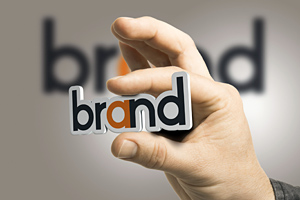Apple: what do you think about first – the fruit or the company? These days, my guess is the company.
Apple is a top dog in the branding food chain because it stands for something and never deviates from its message. Whether you like or agree with the brand, you know what the company stands for.
That's the goal when it comes to branding your practice: finding your tribe of like-minded supporters and giving them what they want. When you market to everyone, you market to no one. You must niche your niche and use branding to share your message.
You can't be all things to all people. Your brand should be based to some extent on who your target customers want and need you to be. When someone hears your name / practice name, or interacts with you or your staff in any way, they should immediately react to your branding blueprint. How you want them to react is the foundation for building your brand.
Brand Basics
A brand is a singular idea or concept you own inside the mind of a prospect. Notice I did not say product. The brand is never the product itself. Although it appears that way to an outsider, a brand is a differentiator of a product or service from similar things. Simply put, your brand is your promise to the customer. It tells them what they can expect from your product and services. Your brand is derived from who you are, who you want to be and who people perceive you to be. It's all about perception.
Branding sounds a lot like marketing, but it's not. What's the difference? Branding is strategic; marketing is tactical. Branding is the fundamental ingredient in all marketing efforts. Branding is not pushing people into buying, but rather pulling them in with a sincere want. It's the expression of your value, product or service.
 Marketing may entice someone to buy your product or service once, but it will not guarantee a loyal customer. That's why a service brand is never built on a pricing strategy. Market share is not based on merit, but on the power of the brand in the mind. There will always be someone who can come in cheaper, but there will never be someone who can duplicate your authentic message and customer promise.
Marketing may entice someone to buy your product or service once, but it will not guarantee a loyal customer. That's why a service brand is never built on a pricing strategy. Market share is not based on merit, but on the power of the brand in the mind. There will always be someone who can come in cheaper, but there will never be someone who can duplicate your authentic message and customer promise.
The power of branding comes in the form of perceived quality or emotional attachment. When people have an emotional attachment to a brand, they are willing to pay a higher price. You are paid in direct correlation to the value you bring to the marketplace. Value is perception. Change perception and you change everything. Here are some fundamental strategies to help you discover, develop and expand your brand.
Discovering Your Brand: 5 Questions to Ask Yourself
Locking in your brand is a journey of personal self-discovery. It will be overwhelming, time-consuming and often force you to step outside your comfort zone. Before beginning you must answer a few fundamental questions:
1. What is your mission? Why are you doing what you're doing? Why did you become a chiropractor? Why did you choose to specialize in the techniques you provide?
2. What are the benefits and features of your services? What makes your services unique from all the others? Why should a customer choose you over everyone else? Being a chiropractor is not enough.
3. What do your customers and prospects already think of your services? People have a mental picture of chiropractic as its own brand! Their perception of chiropractic defines you. When they think of a chiropractor, you are lumped in with all the others. People think every chiropractor provides the same service. You must define yourself by branding you, not chiropractic.
4. What qualities do you want them to associate with your service? What's the essence of your service? Hint: It's not being really good at what you do. People expect you to be good. That's not memorable. They are looking for the "wow" factor: the experience that keeps them coming back for more. The product or service is not the linchpin for people returning; it's the experience. Your brand must represent that experience.
5. How committed are you to truly representing the brand? It can't be something you start and then stop. There is no dropping the branding strategy. You have one chance at making a great first impression. When you launch the final branding blueprint, it's OK if you need to tweak it along the way; that's called learning. But you can't launch and then let it fizzle out. Your customers will notice, and it's very difficult to launch it again authentically.
You should not create a brand because you are supposed to. You should create and define your brand because you want to change the world. That's true, authentic branding power.
Ways to Brand Your Brand
Steve Jobs, the founder of Apple, once said his mission was to "create a ding in the universe." That's a powerful mission. I think it's safe to say he did. Creating a ding takes commitment and an unwavering belief in your brand.
People embrace your brand when they see and feel your passion. Developing and expanding your brand depends on your personality. How far you are willing to step outside your comfort dictates how far you will go. If you play it safe, you get safe results. If you take the crazy road now and then, you get crazy results. Crazy is the road less traveled, but it's often the best one for changing the world.
1. Create an inspiring logo. You need a logo that represents your mission and who you are. Don't just get a generic logo. Boring! The brain doesn't pay attention to boring. Think long term. Envision your logo on everything and then place it on everything (business cards, shirts, mugs, walls, forms, social media, articles, blogs, pictures).
One of the most powerful ways to use the logo is on social media pictures. Get the logo into a transparent image format (GIF and PNG are two options). Keep it simple and elegant; not busy and detailed. Simplicity works in the transparency world. Overlay your image on every picture. Instagram is my personal favorite place to do it. You can create the transparent format on Photoshop if you are computer savvy; or have your graphic artist create the file. I recommend using Fiverr.com as a resource for creating and formatting a logo – very affordable and fast turnaround on projects.
2. Develop a tagline. The tagline goes with your logo. This will take the most time to create. The tagline encompasses the true essence of your message. Some examples of power taglines include: "Think Different" (Apple); "Just Do It" (Nike); "I'm Lovin' It" (McDonald's); "Got Milk?" (milk industry); "America Runs on Dunkin'" (Dunkin' Donuts); and "The Ultimate Driving Machine" (BMW).
Get the idea? Short, sweet and to the point. The tagline for my practice, Stop Chasing Pain, is "Feel Better in Four or Schedule No More." It tells people what to expect and what I represent. Give me fours sessions and feel better or I will find you someone who will. Always honor and respect your tagline.
3. Branding is a team effort. Schedule a staff meeting and ask for input in creating and expanding the brand. Your staff is on the front lines every day with patients and customers. Who's better qualified to build a brand? Some of the best brands are built by employees.
When a branding message has been created, the entire team must be on board. A culture of branding must exist in and out of the office. New employees should be trained on the branding message. If you already have a brand, ask your employees what they think about it; pros and cons. Don't be afraid of change. Perhaps you have a great message that simply needs a little updating or modernizing.
4. Consistency is king. This is probably the most important consideration on the list. You must have an unwavering commitment to adhere to the band message. All marketing efforts are filtered through the brand. Any new additions to the office in regards to staff, equipment, techniques, etc., are done with the brand foundation in mind.
Stay focused and do not deviate from the message. If you find yourself wanting to deviate, that's a good indication you need to change the message. If you cannot stay consistent, your attempts to build a brand will fail.
5. Pick your social media linchpin. You are on social media right? If not, that's the No. 1 step for today. (See my article in the December 2015 issue for tips on how to engage people via social media.) There are so many options (Facebook, Twitter, SnapChat, Instagram, YouTube, etc.); it can be overwhelming. Which one should you choose? That depends on your personality and the type of customer you are after. Each platform has its own personality, some being more edgy than others.
Think of social media as your personal friends, each having their own unique personality that you communicate with differently. Don't post the same content and message on Twitter as you do on Facebook. For example, let's say you wanted to post something about helping plantar fasciitis in your office. Here's how to do it:
- YouTube: post a short "how to" video on a self-treatment option.
- Twitter: post a link to an article on plantar fasciitis.
- Instagram: post a picture of you treating a foot (adding your transparent logo, of course) or include a 15-second snippet of the YouTube video with a brief explanation.
- Facebook: post your blog about the entire topic including the video, picture and article.
Pick one as your main focus and branch out from there. Try each one and see which gives you the most positive feedback, shares and likes. One will be linchpin to online success.
Get Busy Branding
Remember, your brand is what your prospective customer / patient thinks of when they hear your name and tagline or see your logo. It's everything people think they know about your name brand, both factual and emotional. Your brand ultimately exists in someone's mind. You need to spark their mind to act and remember the experience.
Create the desire to return for what your brand message represents. If you don't define your brand, you will get lost in the sea of sameness. That's the kiss of business death. Get busy branding and make it happen.
Click here for more information about Perry Nickelston, DC, FMS, SFMA.





